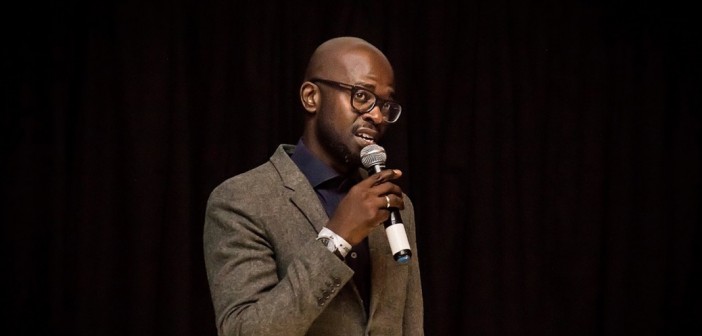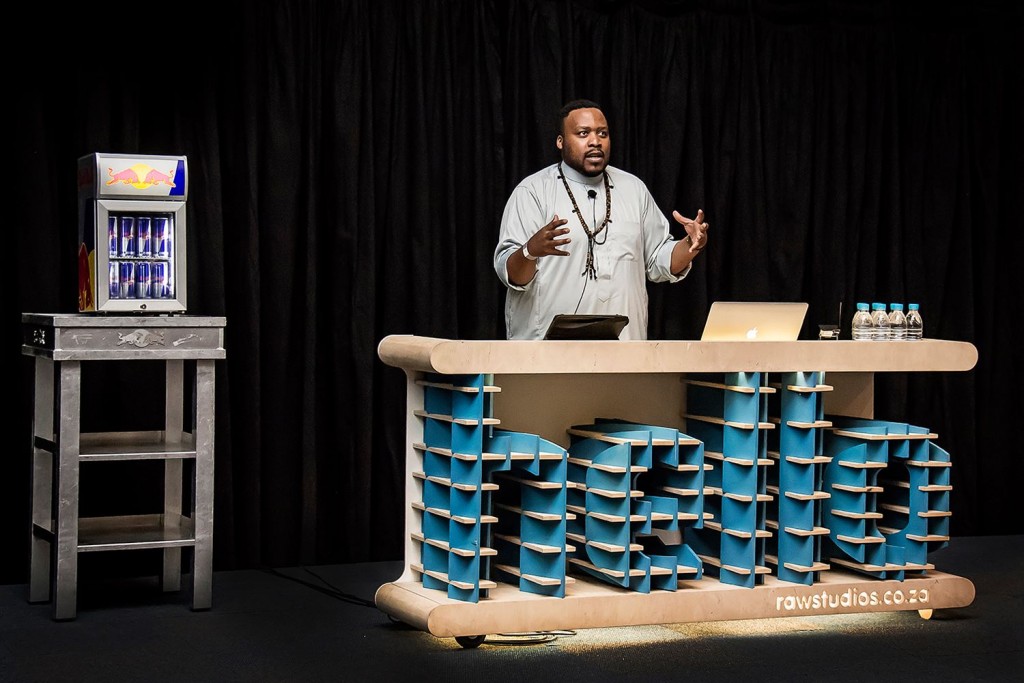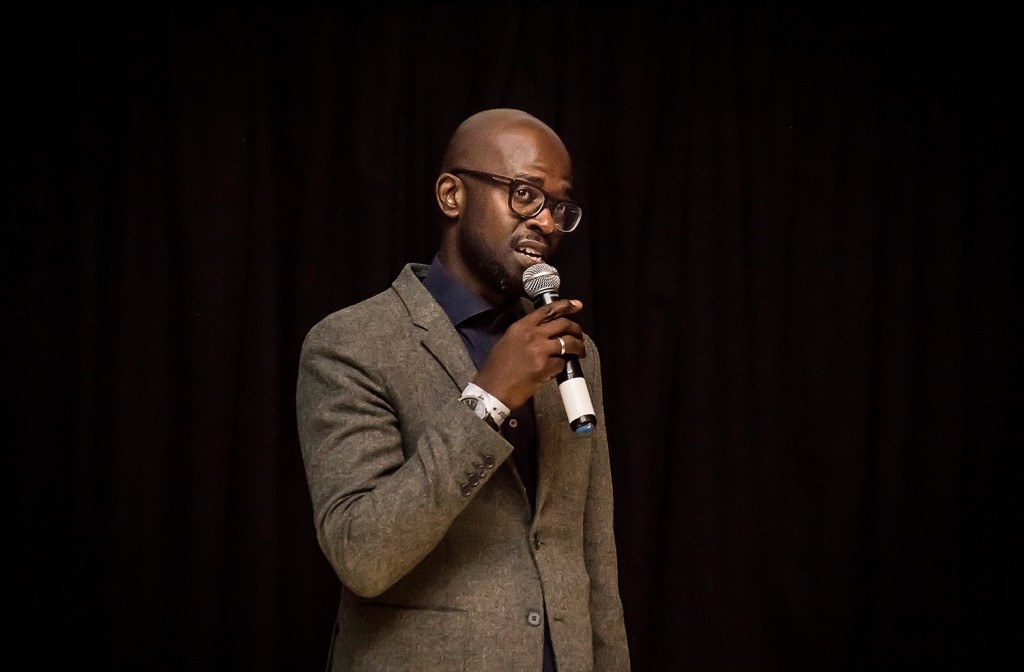Reassessing what you thought you knew – a casual mind-workout
Hello Ambassador, or #HA2015, as it was lauded online upped their game, for a third year in a row, on a cold, overcast day at the Sci-Bono Discovery Centre in Newtown, Johannesburg on 4 and 5 September. Originally having found its roots in Pretoria, in 2013, Hello Ambassador’s grown from strength to strength having grown to a 2-day creative festival where emerging artists, creative entrepreneurs and industry experts can meet, network, inspire and educate while improving on open and accessible models to empower creatives across South Africa.
Here’s what Day 1 was like. According to me, anyway.
I missed Robert Brozin, co-founder of Nando’s’ Changing the World, One Chicken at a Time! but, according to attendees, him and his team are, and I believe them. Nando’s is a global franchise and they even slide into battle rappers’ mentions.
Dillion Sphiri was up next and first in line for me with his creative hub Creative Nestlings where, for only R500 a year, creatives from any sphere of activity are able to connect with whomever and whatever they require: “Need a camera for a few days? Connect with someone who has the equipment using @creativenestlin. Done.”
Creative Nestlings’ website opens with a bold statement: You are not alone and true to their statement, #theNEST offers a space where creatives can connect, network, attend events and support each other without the bureaucracy that ordinarily pervades creative endeavours. So, get involved, stop feeling isolated and go far by going together. Hit them up online here.
Wildcard speakers Will & Heart spoke about providing social media, advertising and branding solutions for NGOs while Esther van Eeden explained why sustainability in design thinking is a must.
Tumi Molekane with his talk, We Were Almost Great, made #HA2015 attendees sit up with 8 tips for retaining your creative greatness within an often cannibalistic creative industry. A recap of his 8 tips included:
1. Insulate yourself – “friends operating in the scene progressed in terms of EACH OTHER.”
2. Reject the prawns – “do you and leave those behind who don’t support or believe.”
3. Seeds > Trees – in short, fuck success. when you’re chasing after success, you limit yourself.
4. Survive the break – “the whole creative industry is set up to break you but you CAN survive it.”
5. Insist on your own terms – if the shoe don’t fit, chuck it.
6. “Rob The Church” – “stand up against institutions that don’t fux with you.”
7. Serve, be useful – provide value anywhere possible and avoid being redundant.
8. Remember your compass – “it’s late, you get stopped, you forgot your license and you pay R50… that compass.”
In short, Molekane could probably be president, but he’s into music. So, sorry.
Fran Luckin followed on Molekane and spoke some hard-hitting truths in her talk Why You’re Not Crazy touching on the idea of the artistic muse or the mystical light-bulb moment. Basically, stop waiting. Just do and to quote “the bulk of creative work and coming up with an idea that works is simply showing up and just doing it.”
Another quote which stood out for me, was “what’s the use of 500 ideas and all of them are crap? or if you can’t tell the difference?” Ja, né. For me, that’s young creatives’ output and problem, so, from one millennial to fellow millennials – when we’re done staring into the dark abyss of our own asses, for once, let’s listen to those that trod before us?
#HA2015 simply couldn’t handle so much truth and greatness and by the time Black Coffee took to the stage with his talk Africa Rising attendees were positively gyrating with halos of inspiration and that’s where Black Coffee took it to the next level. No fancy preso, no dictating. Just a conversation.
Sure, he briefly discussed his business, what it took to get there and the who’s who that’s involved but within a few minutes, the conversation turned to the audience and resulted in a powerful Q&A session – something none of the other speakers could achieve.
Black Coffee brought his message home and kept it local by stating the importance of sticking to what you know and knowing your audience, first and fore-mostly. Once that’s sorted, you need to think about what YOU’RE bringing to the table and what makes you different. One of the reasons cited for why Black Coffee’s so successful is that they’re “so South African that everyone can relate.”
Furthermore, Black Coffee listed some things holding South Africa’s creative economy back to which there was some ummms and aaahs but mostly solemn agreement:
1. “What’s stopping other South Africans from reaching their creative goals is vision. We don’t believe in ourselves.”
2. “You ARE a business. you’re not IN business. you’re walking; people see you. make the call. don’t wait for it.”
3. Nigeria overtook us because their arts industry is booming. We need a government that understands the power of art.”
4. “One of the main things holding South Africa back is simply stating ‘I can’t afford it’.”
Following Black Coffee was William Struwig, Creative Director at Publicis Machine talking about Turning Great Before Turning Grey – quite the opposite of what Luckin had to say earlier and that’s what I truly enjoyed about #HA2015 is that opinions differed and that’s okay.
Struwig opens with a banger: “An older CEO said young people want to excel quickly and get paid a lot and i thought, yes, that’s the point.” Now, not to diss what I said earlier, but yes, it IS kind of the point BUT bearing in mind that you’ve actually got the skills and the know-how to do so.
Another hard-hitting quote rung true for most attendees, whether creatives, employees or employers: “Working late doesn’t equate great work – your workload is either too much or you’re not managing your time.” Ja.
Struwig rounded up his talk with some tips for those finding themselves within the creative industry, yet in the clutches of advertising:
1. Don’t do it for the awards, it’s subjective. It’s not talking to the public but to 12 people in a dark boardroom.
2. Have an opinion – blending in will keep you in the middle and not asking for help will get you stuck.
3. Stay up to date, read as much as you can and how can you set a trend if you don’t know them?
4. There’s too much of the same stuff – anyone can make an OppiKoppi poster [ohhh sheeet – he went there!]– it’s about being better, different.
5. Know when to bounce – don’t let the guilt catch you. “You’re only doing it for the money” “Yes. Correct.”
6. With that being said – DON’T BURN BRIDGES – the industry is the size of a pinky nail and you might block a hire.
7. Own your work but also don’t claim something that’s not yours just because it’s getting positive acclaim.
8. Be a beginner but act like a pro, push your skill set and HAVE confidence.
I missed Marguerite Pienaar – form follows, workshops and Panel 1: Education for Creative Industries but, you know, I’m sure they were stellar. Or not – I’m pretty opinionated.
Struwig’s a dude who’s young enough to know what’s rad but also old enough to cut the bullshit. Listen to him.
Day 2
Ja, okay, I missed Nathan Lüneberg’s Dreaming of Krokkonosters, A videoscape and Pepe Marais’ The 10 Commandments of Becoming a Citizen of Greatness but Lüneberg was my 2nd year Fine Arts lecturer and she’s a uniquely wise lady, so I’m sure she spoke some pearls. I don’t know Pepe. Sorry Pepe.
I dropped in on Chris Saunders’ talk, Undefined, about halfway through. Saunders, in my opinion, is one of the few white male photographers who manages to walk the fine line of having SA cultures tell their stories and othering and execute expertly on the latter by not doing that.
One way he’s gone about it in the past has been documenting pantsula culture and the stories associated with each move, having the dancers tell Joburg’s story without him imposing his own views. Having worked with various artists during his project Not Chris Saunders, he never once dictated what he envisioned but explicitly told his collaborators to simply “MAKE” something.
Saunders’ latest project, Ghost Diamond, premiered at The Bioscope, 17 September.
Lauren Beukes, on the other hand, takes what she knows and pushes it further as was discussed in her talk Bending The Light: Twisty Fiction and Added Shines. She opens her talk with a quote, saying “some things are too strange for fiction and too true for journalism” and uses it to fuel the research, investigation and imagination behind her work.
In this way, she also encourages finding a new perspective and illustrates this with one of her comics focusing on Wonder Woman as a black female, imagined by a child, playing with a white Barbie doll in a township setup and stated “the only way you’ll find out and know is by going there.”
Beukes ended her talk with the idea that by opening your work to fans and other artists, you’ll find that “other perspective” you’re looking for and, besides, you never know what they’ll come up with.
Panel 2: Creative Economy and Entrepreneurship opened with the fact that the creative economy is one of the fastest growing economies in the world and has doubled in the last 10 years but Africa contributes 1%. That’s, um, scary if you think how many of us actually DO work/play within the creative economy.
To the three panelists, the term ‘creative economy’ meant different things such as survival, breaking barriers and transacting without even knowing it and highlighted some inhibitors as support, infrastructure and education and a lack entrepreneurial training.
Although the panel stressed that an entrepreneurial mindset is a requirement for the creative individual and economy to thrive, I don’t necessarily agree with the fact that every creative needs to be or can be a businessman/woman.
Lastly, the panel had some “tips” for reaching out, getting funding and collaborating, but to be honest… besides for Dillion Sphiri’s Creative Nestlings, it seemed like the age-old story: hopefully you know a handful of people with Klout who can get you in there or ask a brand for funding, diluting your work’s meaning but hey, cashola, right?
Nonku Phiri spoke from the heart with her talk, Fear and Execution, luring attendees in with a beautiful melody before touching on some truths and honesties about what it takes to make it within the creative economy and some transparent barriers to overcome.
One particular gem, which stood out for me in particular was “Use your flaws to become more of yourself and use fear to find your secret weapon.” She also wore really nice skoene – if only there was a Shazam but for immediately-wearable shoes. Kickstarter, anyone? No pun intended.
Bryan Little’s A quest into FutureFilm was a definite highlight for me. He starts off with some artistic anarchy of which I am very much a fan: “We slapped an MTV logo onto our short films and sent it to every name at mtv.com and suddenly we were a big deal.”
He spoke about his film, The African Cypher, filmed by Fly on The Wall which got attendees to sit up and listen. He also broke down, after, at the memory of his recently passed friend. After, #HA2015 was his to own.
Little got into integrating film and virtual reality and showed us a couple of reels of where he’s explored this field, including his latest project, Endemic Project, an immersive installation experience, based on Rhodes Drive, Cape Town.
While experimenting with traditional methods of filmmaking, he also used new ways of storytelling and was cited as a vandal when trying to remove his own work, after its intended period of installation came to an end, purely because the general public enjoyed his work so much.
Check it out for yourself, preferably IRL if you can.
I missed workshops, wildcard speakers: Lee-Anne Geldenhuys and Mbasa Tsetsana, the awards and the afterparty at The Bassline BUT my experience of #HA2015 was wholly positive and I’d totes recommend you attend yourself, in future. It’s like a holiday for your mind.
Written by Liz Dom







